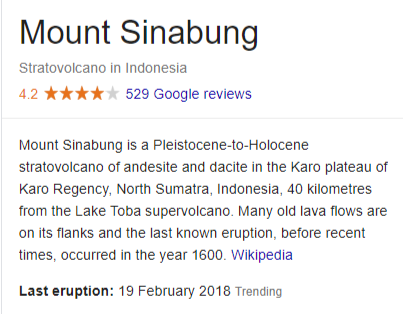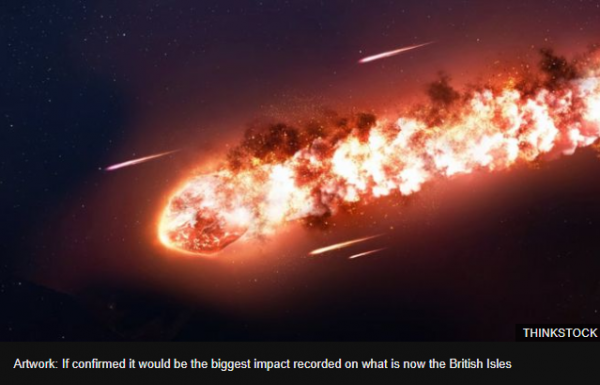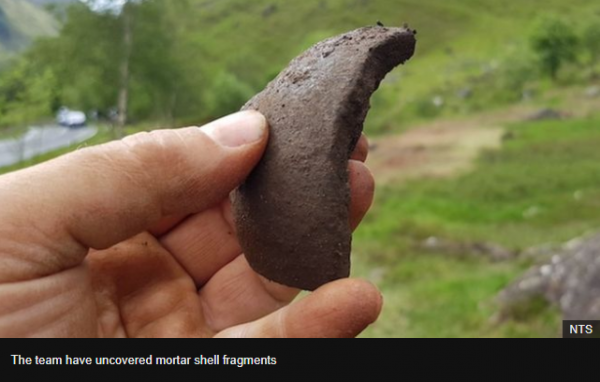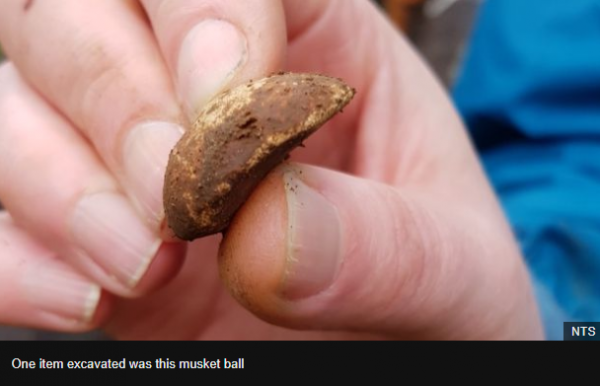-
Posts
20,847 -
Joined
-
Last visited
-
Days Won
49
Everything posted by CaaC (John)
-
Chandrayaan-2: India unveils spacecraft for second Moon mission India's space agency has unveiled its spacecraft that it plans to launch next month and hopes to land on the Moon in early September. If successful, India will be the fourth country to achieve a soft landing on the Moon, following the US, the former Soviet Union and China. Chandrayaan-2 will be the country's second lunar mission. India's first mission, Chandrayaan-1 which launched in 2008, was an orbiter and did not land on the Moon's surface. This mission will focus on the lunar's surface and gather data on water, minerals and rock formations. The new spacecraft will have a lander, an orbiter and rover. These are photos of the craft in the Indian Space and Research Organisation's (ISRO) lab, where scientists have been busy getting the spacecraft ready: If all goes according to plan, the lander and rover will touch down near the lunar south pole in September. If successful, it would be the first-ever spacecraft to land in that region. The rover is expected to operate for 14 days on the Moon, ISRO chairperson K Sivan told the Times of India newspaper. "The rover will analyse the content of the lunar surface and send data and images back to the earth," he said. https://www.bbc.co.uk/news/world-asia-india-48605310
- 1,657 replies
-
- space exploration
- astronomy
-
(and 1 more)
Tagged with:
-
Earth from space: Spectacular volcanic eruptions seen from above Daniel Bettridge SLIDES 1/21
-
Ahh, now I know. Strange that the Welsh National Stadium has a closed roof facility and you would think something as big as the Cricket World Cup series would have been ideal playing there because of the weather.
-
You never know @Stick With Azeem, football can be a funny old game and so can cricket be, England are favourites so I do believe but anything can happen.
-
It makes you wonder why don't they play games like this in a stadium that has a retractable roof covering?
-
Yet when I grew up in Australia a lot of Australians would call Italians wogs if I remember right, the word Pome (Pommie) to an Australian means Prisoner of Mother England where prisoners were sent from England to colonise Australia many moons ago, one way I got an Aussie upset when he called me a bloody Pommie bastard when I was out there I would reply at least my great grandfather was not a fucking convict, I got in many a punch up in them days but it's not as bad nowadays out there so I am told by family who have lived there since the late '50s.
-
Funny old world we live in nowadays @Spike, the Aussies can call the English Poms and the Americans call them Limey's yet it's classed as racial if we say Paki for a Pakistan.
-
Your tail-enders are wagging their tails buddy and frustrating the Aussies.
-
Pissing down here and the wind blowing a gale, so much for summer, I don't mind the cold but wind and rain, no thanks.
-
Warren Gatland named British and Irish Lions coach for 2021 South Africa tour Warren Gatland has been confirmed as head coach of the British and Irish Lions for a third time. Gatland, currently Wales coach, will take charge in South Africa in 2021, having already presided over a series win in Australia in 2013, and a draw in New Zealand four years later. The 55-year-old New Zealander is standing down as Wales boss after the World Cup this year. He will officially start with the Lions in the summer of 2020. "I'm hugely honoured and delighted to lead the Lions again," said Gatland, who becomes just the second man in history - after Sir Ian McGeechan - to take charge of three tours. "It is exciting and a great challenge. The Lions rightly have a truly special place in the game and I jumped at the chance to be involved again when I was approached about the role." (More) > https://www.bbc.co.uk/sport/rugby-union/48606184
-
40,000-year-old Ice Age wolf head found in Siberia Alec Luhn © Maria Turchenkova/For The Telegraph Albert Protopopov examines a woolly mammoth that was preserved in the permafrost during a visit by The Telegraph in March Russian and Japanese scientists have unveiled the first intact adult head of an Ice Age wolf species, which was preserved in permafrost for 40,000 years. They hope that the unique find will help them learn more about an ancient predator that roamed Europe and Asia alongside the woolly rhinoceros and mammoth, including its ultimate fate. "We want to answer the question of whether these wolves disappeared or turned into modern wolves, how much they are related to modern wolves," Albert Protopopov, head of mammoth fauna studies at the Yakutia academy of sciences, told The Telegraph. Still covered in thick fur and sporting a vicious-looking set of fangs, the 40-centimetre head was made public at a woolly mammoth exhibition in Tokyo last week. The wolf was between two and four years old when it met its end. © Provided by Telegraph Media Group Limited Researchers at the Jikei University School of Medicine in Tokyo performed tomographic scans of the wolf and cave lion heads Credit: Naoki Suzuki The head was found on the Tirekhtyakh river by locals hunting for lucrative mammoth tusks in the remote Siberian region of Yakutia last year. Well-preserved infant cave lions have been previously discovered nearby. The soil in most of Yakutia remains frozen year round, preventing ancient tusks and carcasses from decomposing. Specimens have been emerging ever more frequently as climate change gradually thaws this permafrost. The mammoth tusk industry, which has been booming after China banned the carving of elephant ivory, has become the main source of palaeontological finds in the region, and the hunters gave the head to Mr Protopopov. Unsure if it was thousands of years old or just a few hundred, he passed a sample to the museum of natural history in Stockholm, where the head was found to date to 40 millennia ago. © Albert Protopopov The first intact head of an adult Pleistocene wolf was found by a group looking for woolly mammoth tusks in Siberia Researchers at the Jikei University School of Medicine in Tokyo performed tomographic scans to map muscles and tissue in the specimen. Both the Stockholm and Tokyo facilities will continue to study the DNA and internal anatomy of the head, which includes a fully preserved brain. Working with Russian scientists, they plan to compare the animal's genetic makeup and morphology to the wolves of today. It is not clear whether the “Pleistocene wolf” was larger than contemporary wolves, but its jaws were definitely stronger. “They could kill bigger animals. Probably the biggest was a bison,” Mr Protopopov said. “It's important for science because wolves in the Pleistocene were broadly dispersed like cave lions,” he said. “There were lots of wolves but we don't know much about them.” Several species of wolves lived during the Pleistocene ice age, including the celebrated dire wolf in the Americas. Based on bones found in Siberia, both dogs and modern wolves are believed to have split off from a wolf ancestor at least 27,000 years ago. Siberian huskies carry some genes of this ancient wolf even today. The Tokyo exhibition also featured a new Siberian cave lion cub specimen named Spartak, which weighs less than two pounds. It is in near-pristine condition, like the wolf head, and will be compared to modern lions. Scientists from Yakutia and Japan also hope to one day clone a woolly mammoth from tissue discovered in the Siberian permafrost, although such a project is not possible with current techniques. https://www.msn.com/en-gb/news/offbeat/40000-year-old-ice-age-wolf-head-found-in-siberia/ar-AACIRgl?li=BBoPWjQ&ocid=mailsignout
-
Just spotted this in my bookshelf, looking for something to read when I finish a John Grisham book I have nearly finished and forgot all about the greatest that our son bought me for a present (Christmas, Birthday, Fathers Day, can't remember when?), this will be read next.
-
Talk about freezing your bollocks off!!
-
Antarctica's mysterious ice holes are finally making sense Kat Eschner Winter in Antarctica is frigid, persistently dark, violently stormy, and, at least in some years, home to puzzling holes in the sea ice. Known as polynyas, these strange pits “have been this enduring mystery in polar oceanography” since several large ones were first spotted in the 1970s, says Ethan Campbell, a doctoral student in the School of Oceanography at the University of Washington and the author of a new study that offers tantalizing clues about how polynyas form and where they fit in the study of the vast Southern Ocean. In Antarctica, these craters function as a rest stop for animals like seals who swim under the ice, giving them somewhere to come up for air. However, Campbell says researchers think there’s a lot more to them than that. He and others think the holes—because they’re warm and melt sea ice that holds carbon—also release a significant amount of carbon dioxide into the atmosphere. That makes understanding their role important for climate science. The researchers used data from three different sources to help them better understand what’s happening with polynyas: satellite footage, sensors strapped to seals (yes, really), and drifting “float robots” that became trapped in a fortunate spot. Automated robotic devices are crucial to understanding these holes. “We cannot go to Antarctica when the polynya opens in winter. Satellites can see that the sea ice opens, but they cannot look at the effect of this opening on the water column,” Céline Heuzé, a University of Gothenburg oceanographer who wasn't involved in the research but did review the paper before publication, told Popular Science in an email. The robots used in this study are some of the first who can work in the icy waters of Antarctica, allowing researchers to study a place they can’t get to. Around 200 of the float robots, which travel beneath water and ice, intermittently bobbing to the surface to transmit information, have been released by the Southern Ocean Carbon and Climate Observations and Modeling Project to drift around the ocean and under the ice. In late 2014, two of them entered the Wendell Sea, where the 1970s polynyas opened up, to study the area. Unexpectedly, two of the floats became trapped on the Maud Rise, an underwater mountain that affects currents, says Campbell. A rotating cylinder of water positioned over the seamounts held the floats in place, he says. Most of the time the floats don’t stay put. When a large polynya opened up there again in 2016 and again in 2017 the floats were in perfect position to send continuous data about the site. “It was just dumb luck. It was incredible,” says Campbell. “In 2017, two of them actually surfaced inside the polynya, which is a very rare occurrence.” The team also relied on information gathered from “instrumented seals” with temperature probes glued to their heads (we told you). This kind of data collection, which has been going on for more than a decade, gave the team insight into what normal conditions in that ocean region are like since no seals found these polynyas or surfaced within them. Using these two sources of data alongside satellite data, the research team was able to show evidence that deep ocean mixing—when (relatively) warm upper-ocean water and freezing, slow-moving lower-ocean water mix—occurs within them. This is significant, says Campbell, “because the deep ocean is generally a very quiet place where changes happen slowly. Within these polynyas, changes happen a lot quicker.” “To me, this study raises even more questions than it answers,” writes Heuzé. These queries include understanding why there was a forty-year gap between the development of big polynyas in the Wendell Sea, as well as why small ones instead of large ones developed in 2018, and how all these ice holes affect atmospheric conditions in the region. Campbell and his team are still working on some of these questions, and what they find may have a huge impact for the future of climate modelling. Currently, he says, many climate models predict polynyas happening more often than they actually are occurring in the ocean. If researchers can better figure out what conditions lead to polynyas, they could be better equipped to predict when one might form next. https://www.msn.com/en-gb/news/offbeat/antarcticas-mysterious-ice-holes-are-finally-making-sense/ar-AACGL2H
-
Forget that date above @Stan, that's not been updated from Wikipedia, just saw this (below) on MSN Volcano alert issued as 7km-high ash cloud sparks panic 8 hrs ago Officials have warned of more potential eruptions from an active volcano in Indonesia after a huge ash cloud sparked panic among residents. Mount Sinabung on the island of Sumatra erupted for around nine minutes on Sunday, sending volcanic ash seven kilometres (4.4 miles) into the sky. Although no casualties were reported, officials monitoring the volcano - which has seen a spike in activity since 2010 - have warned of further eruptions. Scientists at a Sinabung observatory post said there were aftershocks following the eruption, which happened between midnight and 6 am local time. Authorities urged people in the area to use face masks and stay indoors to protect themselves against the volcanic ash. Mount Sinabung, which is more than 8,000ft high, is among Indonesia's most active volcanoes but had been inactive for four centuries before erupting in 2010. Indonesia has nearly 130 active volcanoes, more than any other country. The Foreign Office advises against all travel within seven kilometres (4.4 miles) of the Mount Sinabung crater in Kalo Regency - an exclusion zone put in place by local authorities due to ongoing volcanic activity. "There are many active volcanoes in Indonesia, any of which can erupt with little or no warning," it says. "This often results in the evacuation of villages within a three to seven-kilometre radius and disruption to air travel in the wider region. "In the past, repeated eruptions have caused destruction and fatalities." The volcanic activity comes after hundreds of people died in December when a tsunami swept away hotels and homes in Indonesia. The disaster happened less than three months after more than 1,500 were feared dead, missing or injured when a 7.5 magnitude tremor and tsunami struck the South East Asian country. https://www.msn.com/en-gb/news/world/volcano-alert-issued-as-7km-high-ash-cloud-sparks-panic/ar-AACF3o7?li=AAnZ9Ug
-
-
-
They say he was lucky to be alive, oh dear, the Bull was more than likely killed after just for the fun of it. "According to a medical report, Collado suffered a huge 12-inch gash to his thigh and also damaged veins, arteries and muscles as a result of the shocking incident" https://www.ladbible.com/news/news-horrific-moment-a-bullfighter-is-gored-during-performance-in-madrid-20190610?source=twitter#
-
Astronomy Picture of the Day 2019 June 10 Jupiter Abyss Image Credit: NASA, Juno, SwRI, MSSS; Processing & License: Gerald Eichstädt & Sean Doran Explanation: What's that black spot on Jupiter? No one is sure. During the latest pass of NASA's Juno around Jupiter, the robotic spacecraft imaged a usually dark cloud feature informally dubbed the Abyss. Surrounding cloud patterns show the Abyss to be at the centre of a vortex. Since dark features on Jupiter's atmosphere tend to run deeper than light features, the Abyss may really be the deep hole that it appears -- but without more evidence that remains conjecture. The Abyss is surrounded by a complex of meandering clouds and other swirling storm systems, some of which are topped by light colored, high-altitude clouds. The featured image was captured last month while Juno passed only about 15,000 kilometers above Jupiter's cloud tops. The next close pass of Juno near Jupiter will be in July. https://apod.nasa.gov/apod/astropix.html
- 1,657 replies
-
- space exploration
- astronomy
-
(and 1 more)
Tagged with:
-
Scientists close in on hidden Scottish meteorite crater Scientists think the time has come for a full geophysical survey of The Minch, to see if the Scottish strait is hiding an ancient meteorite crater. The idea that such a structure lies between the Western Isles and mainland Scotland was first raised back in 2008. They found evidence on the Highlands coast for the rocky debris that would have been produced by a giant impact. Now, the team from Oxford and Aberdeen universities believes it can pinpoint where the space object fell to Earth. Writing in the Journal of the Geological Society, Dr Ken Amor and colleagues say this location is centred about 15-20km west-northwest of Enard Bay - part way across The Minch towards Stornoway in the Outer Hebrides. The feature would be buried deep under the seafloor, they add. It's an intriguing prospect. The evidence gathered so far suggests the event occurred about 1.2 billion years ago when the continents were arranged very differently from how they are now, and life on our planet would have existed almost exclusively in the oceans. The key supporting evidence is a group of reddish-coloured rocks on the eastern side of The Minch known as the Stac Fada deposit. These are determined to be ejecta from the impact - the material hurled outwards when a 1-2km-wide object slammed into what was probably then some kind of rift valley. The rocks are fragmented and contain melt particles, and also what geologists term shocked quartz - a type of mineral that has at some point been subjected to enormous pressures. Shocked quartz is very often associated with meteorite events. The latest examinations of the Stac Fada deposit have now given the researchers some directional information that allows them to be more precise about where the ejecta came from. "If you imagine debris flowing out in a big cloud across the landscape, hugging the ground, eventually that material slows down and comes to rest. But it's the stuff out in front that stops first while the stuff behind is still pushing forward and it overlaps what's in front," explained Dr Amor. "That's what we see and it gives us a strong directional indicator that we can trace backwards. "Also, we've examined the orientation of magnetic particles within the fabric of the rock at several locations, and this too allows us to triangulate back to an origin," the Oxford researcher told BBC News. The lines converge out in The Minch. The team is examining some seismic surveys that were done in the 1970s as part of an oil prospecting programme, but they are of poor quality. Likewise, they are investigating gravity data. This indicates something anomalous in the strait, but again it is all somewhat uncertain. "What we really need is a new high-resolution geophysical survey - a 3D seismic survey," said Dr Amor. "Unfortunately, being offshore that would cost a lot of money. I shall be putting in a grant proposal to do some seismic work. That would be a first step and would greatly assist the definition of any impact structure." https://www.bbc.co.uk/news/science-environment-48560989
-
Battle of Glenshiel remnants discovered after 300 years Remnants from the Battle of Glenshiel have been uncovered by archaeologists. The team, led by the National Trust for Scotland, have uncovered mortar shell fragments and a musket ball at the battle site near Kyle of Lochalsh. Monday will mark the 300th anniversary of the "forgotten" battle between the Jacobites, who were supported by 300 Spanish troops, and a government army loyal to King George I. Despite their superior numbers, the Jacobites lost. Several large fragments of a coehorn mortar shell and a musket ball have been uncovered at the battle site, where James Francis Edward Stuart's ambitions to take the throne ended. 'Forgotten' battle to be remembered The battle was the first time the coehorn mortar shell was used in Britain, adding to the significance of the discovery. Archaeologists and volunteers excavating the position once occupied by the Spanish troops also dug out a flattened musket ball. Derek Alexander, the trust's head of archaeology, said it was the first evidence found from the battle. He added: "We were allowed to excavate four or five objects. The first that we looked at was the musket ball. "It had been fired from below, up at the Spanish position. It hit the bedrock, flattened and fell to the ground and lay there. It was fired 300 years ago, hit the wall and fell to the ground. Now it has been found." Mr Alexander said such finds "are the tangible remains of historic events, which can be quite rare". He added that the rising "fizzled out", continuing: "It's failure also meant that there was little appetite for another uprising until Bonnie Prince Charlie and the '45. It effectively put paid to Jacobite ambitions for 30 years, which is a long time." https://www.bbc.co.uk/news/uk-scotland-highlands-islands-48574135
-
It added: "No reports of any injuries at the moment." An air ambulance was also seen in the area. Mihaela Gheorghe told the BBC she had "raised several issues" about the safety of wooden balconies on the blocks of flats. She said: "I was in my fourth-floor flat when the fire started. We ran out. The fire brigade came but they found it hard to find a water supply at first. "We said that one day a fire is going to happen. "We raised several issues to the builder, the maintenance companies and the council about the safety of having all these wooden balconies." Another resident named Rav claimed to the BBC he heard neighbours screaming 'fire, fire, fire' and grabbed his children and ran. https://www.msn.com/en-gb/news/uknews/barking-fire-flames-engulf-new-build-block-of-flats/ar-AACCAaP



.thumb.png.411618c291bab9fb752ace06dd839518.png)
.thumb.png.8295abb20f431d7d401dba724bc47c85.png)
.thumb.png.abb1005d02e10592c61f154a5a165151.png)

.png.d9166151dd00620e44406a8c3bfe2503.png)





.png.a3bda9e95e386c583a2b7ef1b9754ea6.png)
.png.063e048175b55718f6197a034a034428.png)

.thumb.png.7da20c4eb74219dd1b1e416b49fcb698.png)
.thumb.png.69d6d9a22ead383f23bf84f2ac647611.png)
.thumb.png.98ad75bd4aa535a5da4bf0d6810c55ac.png)
.thumb.png.9fb25c14ce1abbac1c4650ee6cb1bab7.png)

.thumb.png.e270fa27c31bf6da8939f14b3b7e3ad1.png)




.thumb.png.0ef3c8939477b27dd5da7923127d02ff.png)